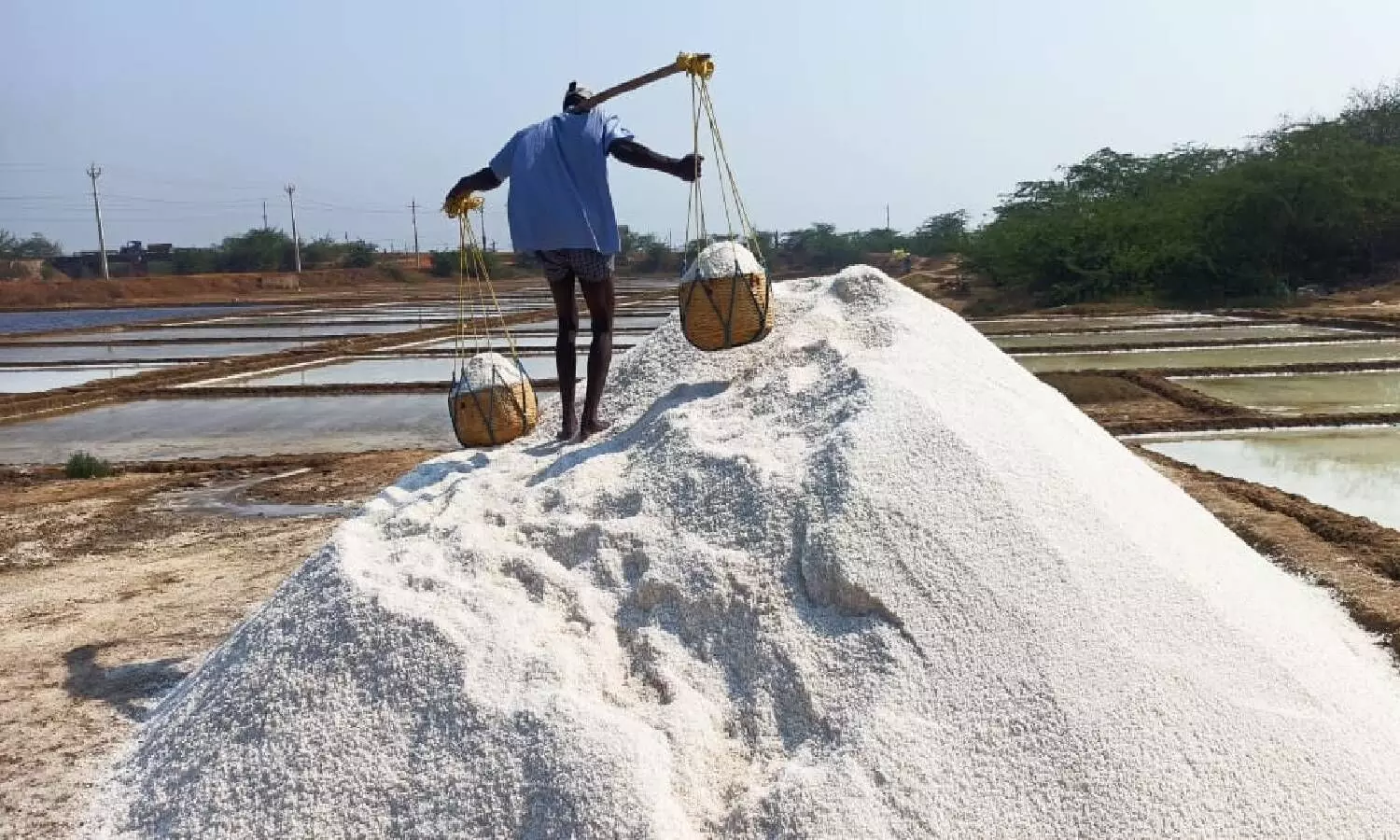Salt pans withering away in Naupada, parts of Andhra Pradesh
More than 5,000 people are dependent on salt cultivation for their livelihood in Srikakulam.
By Newsmeter Network
Srikakulam: The famous salt pans of Naupada in Srikakulam district, the one-of-its-kind once abundant in north coastal Andhra, are disappearing. So are the ones in parts of East Godavari, Krishna, West Godavari, and a few other coastal districts of the state.
The Union government, ignoring traditions in favour of corporate entities, has not renewed the land leases. The lack of subsidy on input and improper transport facility have become major concerns for the salt farmers in the region.
Salt is one of the most basic essentials of life and salt-making is an onerous task apart from being an art. It involves constant toil under the hot sun which poses health problems. But those who make this necessary commodity are badly neglected.
More than 5,000 people are dependent on salt cultivation for their livelihood in Srikakulam.
Till a few years ago, salt was produced in over 6,000 acres in Naupada area in the district but it had come down to over 2,000 acres with poor returns and difficulties in production. As the lands belonged to the Union government, the government is preparing to float tenders to lease the salt pans instead of renewing the license to the salt farmers, said Pilaka Ravi Kumar Reddy, the secretary of AP Salt Farmers Association.
The majority of the salt-makers in the region are small farmers and they cannot afford to compete with corporates in the auctions. The fields in which they toiled for decades will now go to someone.
"We do not know any other work other than salt production. We are losing the opportunities as the Union government hasn't renewed the license," said a salt farmer.
Naupada is the hub for the production of raw salt (in local parlance 'Gallu Uppu'). The demand for raw salt has declined due to the dominance of MNCs. Though the Naupada salt (non-iodized) is good for consumption, it was used mainly for industrial purposes by ice factories and fish processing units.
The president of AP Salt Farmers Association, P. Raja Sekhar, said salt fields are resources that do not exhaust, unlike other minerals. Naupada is popular for salt production but it has been losing its sheen as the area under salt cultivation came down by over 60 per cent.
"The Union government should treat our industry distinctly and not allow them to go for bids. We will follow the rules, accept taxations, but we want our licenses to be automatically renewed,'' he added.
Each farmer spends around Rs. 50,000 per acre but earns only Rs. 75,000 and it would go up to Rs. 1.2 lakh if the government extended support to the farmers. The farmers are getting only Rs. 2 per kg of salt and they produce about 50 bags of salt per week from an acre during the season. The total salt produced is 400 quintals per acre on an average, the farmers said. If the salt farmers fail to get the land for lease, the salt industry will die in the state, they added.
Sources in the industry said Gujarat tops with over 70 per cent of salt production, followed by Tamil Nadu with over 12 per cent. In spite of having a long coastline, Andhra Pradesh's share in salt production is less than one per cent.
Andhra Pradesh has the second-longest coastline in India, 974 km, after Gujarat. It has the potential to produce over 50 lakh tonnes of salt per year. The salt pans are spread over one lakh acres in Andhra Pradesh but only 30 per cent of these are under cultivation.
The salt production in the state has come down to 1.3 lakh MT from over 5 lakh MT. Currently, the value of salt per kilo is Rs. 2 at the farmer's site but is sold at Rs. 25 per kg in the market after processing and branding.